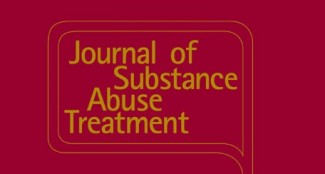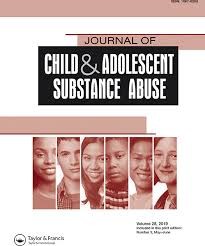Search
Association of Cannabis Retailer Proximity and Density With Cannabis Use Among Pregnant Women in Northern California After Legalization of Cannabis for Recreational Use
This cross-sectional study found that, after the state-level legalization of cannabis for recreational use in California, greater retail availability was associated with higher odds of cannabis use among pregnant women; these results were...
Office-Based Addiction Treatment Retention and Mortality Among People Experiencing Homelessness
Abstract
Importance People experiencing homelessness have been disproportionately affected by the opioid overdose crisis. To mitigate morbidity and mortality, several office-based addiction treatment (OBAT) programs designed for this...
Assessment of Annual Cost of Substance Use Disorder in US Hospitals
Abstract
Importance A persistently high US drug overdose death toll and increasing health care use associated with substance use disorder (SUD) create urgency for comprehensive estimates of attributable direct costs, which can assist in...
Recovery Community Centers: Characteristics of New Attendees and Longitudinal Investigation of the Predictors and Effects of Participation
Abstract
Objective
Recovery community centers (RCCs) have expanded across the U.S., serving as social “recovery hubs” that increase recovery capital (e.g., employment, housing) by providing resources that clinical care does not provide...
Analysis of Active and Passive Tobacco Exposures and Blood Pressure in US Children and Adolescents
Abstract
Importance: Hypertension is a leading cause of cardiovascular disease in adults; preclinical associations between hypertension and cardiovascular disease are seen in childhood. Nicotine is a known toxin, but its association with...
Effect of Cigarette Constituent Messages With Engagement Text on Intention to Quit Smoking Among Adults Who Smoke Cigarettes: A Randomized Clinical Trial
Abstract
Importance: The US Food and Drug Administration (FDA) is required to communicate the risks of tobacco constituents to the public. Few studies have addressed how FDA media campaigns can effectively communicate about cigarette smoke...
Providing addiction services during a pandemic: Lessons learned from COVID-19
Combination Medication Therapy for Methamphetamine Use Disorder
A combination therapy of injectable naltrexone and oral bupropion was found in a randomized clinical trial to improve outcomes for patients with methamphetamine use disorder. This is important because there are no widely approved medication...
HIV and Methamphetamine Use: Double Jeopardy for Transmission of the Novel Coronavirus.
A cross-country group of researchers funded by NIDA has identified needed areas of research related to the intertwining epidemics of HIV, COVID-19 and the increasing use of methamphetamine in the United States among men who have sex with...
Associations between Tobacco Use Patterns and Demographic Characteristics of Sexual Minority and Heterosexual Youth: Results from a Nationwide Online Survey
ABSTRACT
Introduction:
Youth are at risk for tobacco use, and previous research has pointed to increased vulnerabilities associated with sexual minority identity. For example, LGB youth have increased odds for using tobacco than their...
Sex and Gender Effects in Recovery From Alcohol Use Disorder
The current article provides a summary of biopsychosocial gender differences in alcohol use disorder (AUD), then reviews existing literature on gender differences in treatment access, retention, outcomes, and longer-term recovery. Among...
Geographic Proximity to Buprenorphine Treatment Providers in the U.S.
Abstract
Objective
To combat the growing opioid epidemic, people who use drugs need access to medications for opioid use disorder (MOUD) as part of comprehensive treatment. Despite progress, treatment gaps remain. Our objective was to use...
Substance Use Patterns and Health Profiles among US Adults who Use Opioids, Methamphetamine, or Both, 2015-2018
Abstract
Background
Methamphetamine use, with and without opioids, has increased substantially, but little is known about the sociodemographic characteristics, substance use patterns, or health profiles of individuals who use...
Association of Recreational Cannabis Laws in Colorado and Washington State With Changes in Traffic Fatalities, 2005-2017
Abstract
Importance: An important consequence of cannabis legalization is the potential increase in the number of cannabis-impaired drivers on roads, which may result in higher rates of traffic-related injuries and fatalities. To date...
Integrating Treatment for Co-Occurring Mental Health Conditions
Given the high co-occurrence between alcohol use disorder (AUD) and mental health conditions (MHCs), and the increased morbidity associated with the presence of co-occurring disorders, it is important that co-occurring disorders be...
Alcohol’s Effects on Breast Cancer in Women
Globally, more than 2 million new cases of breast cancer are reported annually. The United States alone has more than 496,000 new cases every year. The worldwide prevalence is approximately 6.8 million cases. Although many risk factors for...
A Structural Competency Curriculum for Primary Care Providers to Address the Opioid Use Disorder, HIV, and Hepatitis C Syndemic
The interrelated epidemics of opioid use disorder (OUD) and HIV and hepatitis C virus (HCV) infection have been identified as one of the most pressing syndemics facing the United States today. Research studies and interventions have begun...
Barriers, Facilitators, and Disparities in Retention for Adolescents in Treatment for Substance Use Disorders: A Qualitative Study with Treatment Providers
Abstract
Background
Retention in substance use treatment is one of the strongest predictors of improved outcomes among adolescents, making retention an important goal of treatment. We examined treatment providers’ perspectives on barriers...
The CHILD Intervention for Living Drug-Free Comprehensive Assessment of Risk, Resilience, and Experience (CHILD CARRE) Measure: Initial Findings
This paper summarizes the development and evaluation of an assessment instrument for children ages 7–12. The CHILD CARRE measure is a semi-structured interview with 7 domains. Children from the USA and Argentina (N¼134) completed baseline...
Share the Knowledge: ISSUP members can post in the Knowledge Share – Sign in or become a member

